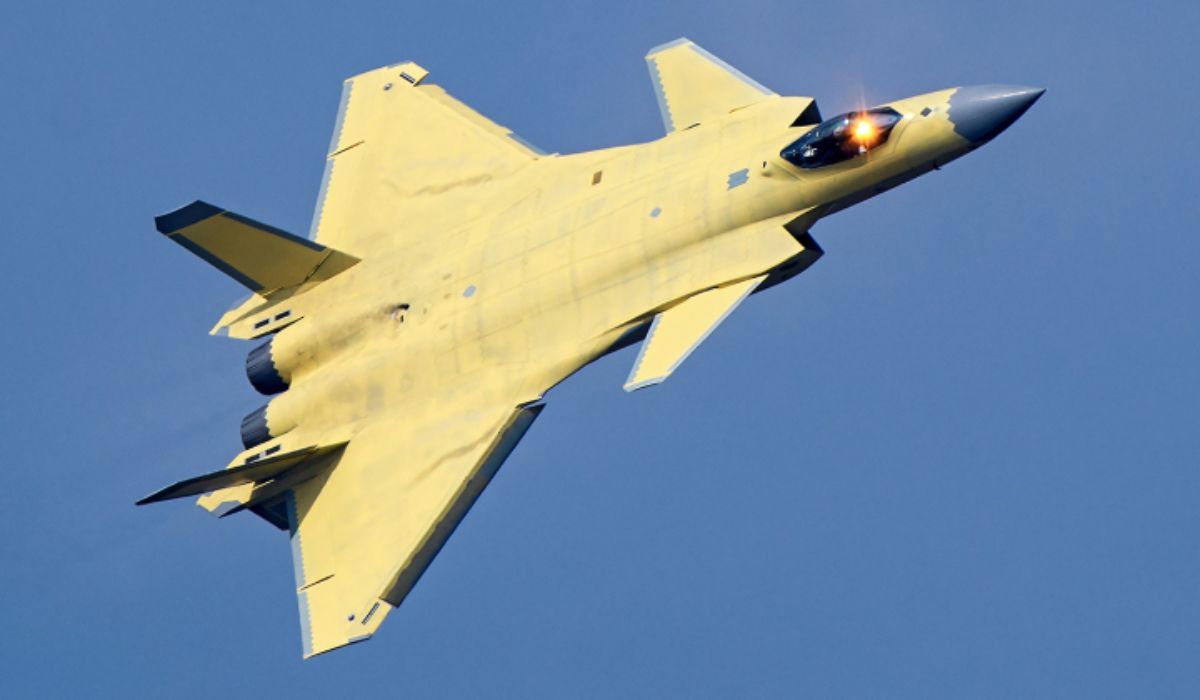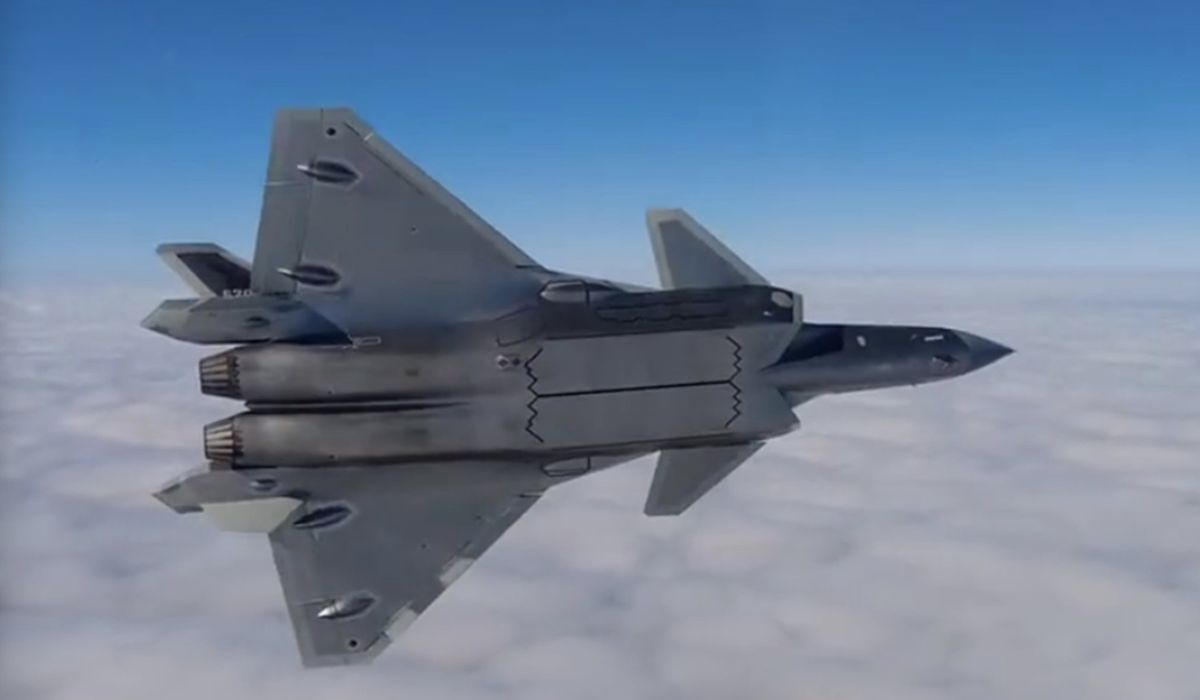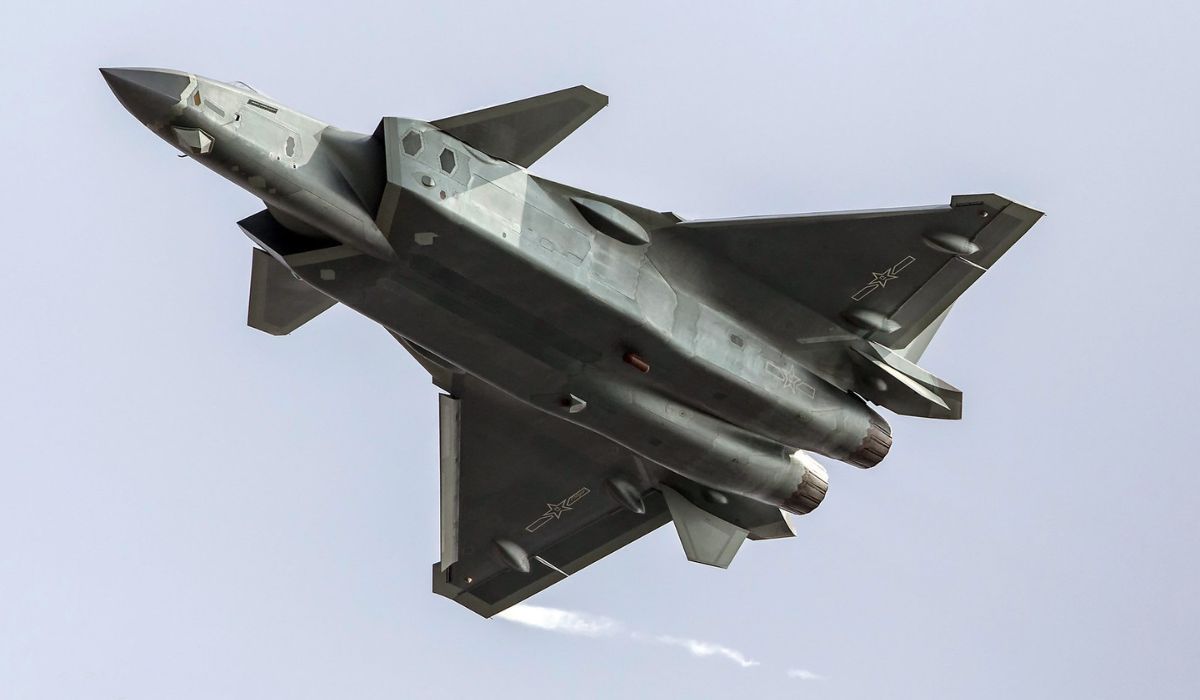Fighter aircraft are integral parts of any military setup. Without having world-class fighter jets at their disposal, a nation risks conceding air superiority in war, which is essentially the equivalent of waving a white flag. As such, it is downright essential to divert plenty of resources towards either manufacturing or purchasing fighter jets.
Three of the best warplanes on the planet are the Chengdu J-20, the Lockheed Martin F-22 Raptor, and the Lockheed Martin F-35 Lightning II. The J-20, often referred to as the Mighty Dragon, is China's mightiest and fastest fighter jet, while the F-22 Raptor and the F-35 are two of the USA's finest. This trio is often compared by people on all fronts of war, with most agreeing that they are head and shoulders above the rest of the fighter jet world. Here is a detailed comparison of the J-20 with its American rivals on 10 parameters to see which one comes out on top.
10 Engine And Power
The Chengdu J-20 is a powerhouse of a fighter jet. It houses two Shenyang WS-10C engines that are supplemented by an afterburning turbofan. The power unit produces 142–147 kN (32,000–33,000 lbf) of thrust when the afterburner is running, which makes it China's mightiest and fastest fighter jet.
By contrast, the F-22 Raptor is powered by two Pratt & Whitney F119-PW-100 augmented turbofans that thump out 156 kN (35,000 lbf) of thrust with the afterburner activated. The F-35 Lightning II has only one Pratt & Whitney F135-PW-100 afterburning turbofan attached to it, but its 191 kN (43,000 lbf) of thrust dwarves its counterparts by a distance.
9 Wingspan
The Chengdu J-20 is called the Mighty Dragon, and that means it flies just like one. Its wingspan stands at an impressive 13.01 meters, which makes it looks majestic when in flight. It is almost similar to the wingspan of the F-22 Raptor, which just edges it out at 13.56 meters. However, there is no noticeable difference in the way the two aircraft fly.
The F-35 Lightning II boasts a wingspan of 11 meters, which is lesser than its counterparts. It has an effect on its wing loading, trumping both the aforementioned jets in the amount of lift it produces.
8 Fuel Capacity
No fighter jet can do its job if its power isn't backed up by fuel efficiency. The amount of fuel it can hold on a full tank is crucial to the impact it can have on a mission. The Chengdu J-20 has a fuel capacity of 26,000 lbs, which makes it the benchmark of its class and the gold standard for other fighter aircraft to live up to.
The F-22 Raptor matches the Mighty Dragon to the dot, with America's ultimate jet fighter boasting a fuel capacity of 26,000 lbs as well. The F-35 Lightning II lags behind its peers in this department, only having a fuel tank capacity of 18,250 lbs.
7 Range
In addition to fuel capacity, it is also important for a fighter jet to have a high mileage. The Chengdu J-20 has a range of 3,400 miles thanks to the fuel that goes into its two external fuel tanks. It is one of the most fuel-efficient fighter aircraft in the world and outclasses even the best ones in the world, including the F-22 Raptor and the F-35 Lightning II.
The F-22 Raptor's range stands at 1,800 miles, which could be increased if both its external fuel tanks are filled. The F-35 Lightning II, meanwhile, has a range of 1,700 miles. Both are significantly less fuel-efficient than their Chinese rival, which seems to have mastered the art of going long on one stint of fuel.
6 Weight
Weight is an important parameter to consider while creating a fighter jet. It plays a key role in maneuverability, which is why engineers focus on making the aircraft as light as possible. The Chengdu J-20's weight stands at 17,000 kilograms when empty and 25,000 kilograms when fully fueled, which is pretty decent.
By contrast, the F-22 Raptor is the heaviest of the bunch, weighing 19,700 kilograms when empty and 29,410 kilograms when fueled. The winner in this department is the F-35 Lightning II, which only weighs 13,290 kilograms dry and 22,471 kilograms full. Indeed, the latter is the pinnacle of aircraft technology in this particular aspect of things.
5 Combat Range
Fighter jets are not meant for ultra-close combat and must possess the ability to hunt down and strike targets from far away. All three aircraft are incredibly capable in this department, which is a big reason why they are three of the best and most powerful warplanes on the planet.
The Mighty Dragon has a combat range of 1,200 miles, which absolutely dwarves the combat ranges of the F-22 Raptor (679 miles in clean subsonic) and the F-35 Lightning II (870 miles on internal fuel). China's flagship fighter aircraft is a true force to be reckoned with in the air, imposing its will on targets anywhere within its vicinity.
4 Top Speed
Manufacturers focus on giving fighter aircraft blistering top speeds. This is done to ensure that they can artfully carry out dogfights and other missions, or in rare cases, retreat hastily should things go south. All three jets are incredibly fast machines, but it is the F-22 Raptor that wins this proverbial race, what with its absolutely incredible Mach 2.25 top speed. However, it is worth mentioning that it can only attain this top speed at altitude, slowing down whenever it flies at sea level or on super cruise at altitude.
The Chengdu J-20 takes the silver medal with its Mach 2 top speed, which runs its American rival pretty close and makes it China's fastest fighter jet. The F-35 Lightning II lacks the pace of the aforementioned aircraft, topping out at Mach 1.6.
3 Firepower
One of the major reasons for the Chengdu J-20 and its American counterparts being called the best and most iconic fighter jets in history are their weapons collection. Their arsenals scream destruction, with the fighter jets boasting armaments that take very little time to scorch a battlefield and establish air superiority.
The Mighty Dragon comes with all kinds of missiles, ranging from long-range ones to short-range AAMs. It does not have a cannon, which means it is strictly for long-ranging sniping. This is very different from the approach taken by the Americans, with the F-22 Raptor and F-35 Lightning II having a 20 mm M61A2 Vulcan rotary cannon and a 25 mm (0.984 in) GAU-22/A four-barrel rotary cannon respectively. The latter pair also come with air-to-air and air-to-surface missiles, making them more versatile than their Chinese counterpart.
2 Defense Systems
The aforementioned firepower sounds incredible and destructive, but what good is all of that without a good defensive setup to back the offensive loadout up? Luckily, all three aircraft are great in the defense department, with their focus on stealth and security making them major headaches in the sky.
The Chengdu J-20 can deploy its PL-10 missile without even opening its bay doors, making it almost impossible to detect on the radar. Another impressive feature is the usage of radar-absorbent materials in its design to make it a ninja of an aircraft. The F-22 Raptor has a similar approach to stealth, but boasts better avionics to keep its pilots one step ahead of enemy aircraft at all times. The F-35 Lightning II is better still, possessing more advanced sensors and communication systems that make it a proper defensive wall.
1 Wing Loading
Wing loading is an essential part of building fighter jets. Important things like stalling speed are determined by this parameter, which means engineers have to adhere to designs that focus on getting the best wing loading possible. The Chengdu J-20 is an ace in this particular department, thumping out a very impressive 69 lb/sq ft of thrust. However, it cannot match the numbers the F-22 Raptor and the F-35 Lightning II can put up.
The F-22 Raptor puts out 77.2 lb/sq ft of lift, but that pales to the F-35 Lightning II's staggering 107.7 lb/sq ft output. The latter's more efficient design means it is the pick of the bunch when it comes to having the best wing loading. This allows it to have a faster average speed during cross-country trips.











